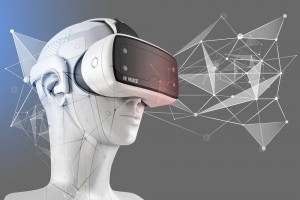Blackrock Neurotech Company; From early BCI to the present day
As mentioned in the previous article about the general structure of an invasive BCI system (link to BCI1 article), the importance of this structure depends on neuronal activity recording tools and their accuracy.
As mentioned in the previous article about the general structure of an invasive BCI system (link to BCI1 article), the importance of this structure depends on neuronal activity recording tools and their accuracy. Utah array electrodes are known as the gold standard for neuroscience studies. Design and application of these electrodes developed in the late 20th century at the University of Utah and soon became the main tools for single or population neuronal activity recordings. This was the beginning of a now-flourishing field of BCI development and research. In 2002, a research institute named BrainGate, consisting of several leading laboratories, was formed to collect the regulatory permissions and financial resources required to launch pilot clinical trials of a first-generation neural interface system, all based on applying Utah array electrodes.
Blackrock Neurotech was founded in 2006 based on previous academic research, focusing on electrode designing and manufacturing and also other neural activity recording devices. In the same year, the company published its first report: an article that reported the results of the first human trial of invasive BCI (1). Results were the beginning era of an extensive series of studies regarding applying these systems for rehabilitation. implanting the electrodes in brain tissue requires specialized, high-risk, and high-cost surgeries. Therefore, until now, the research focused on implanting Utah array electrodes in patients with spinal cord injury, ALS, and locked-in syndrome patients. Each of the implanted electrodes is connected through a port in the skull to a cable that acts as a source of energy and transmitter of neuronal data. With this approach, Blackrock Neurotech Company considers two general goals in the development of BCI systems: communication systems and assistant systems.
Communication systems are generally developed for people who have lost the ability to communicate due to reasons such as paralysis or stroke. For example, in a person with anarthria and spastic quadriparesis caused by a brain-stem stroke, words and sentences were decoded directly from cortical activity during attempted speech with the use of deep-learning models and a natural-language model. (2). In the second approach, Advances in intelligent robotic systems and BCI have helped restore functionality and independence to individuals living with sensorimotor deficits. For instance, Using neurally-driven shared control, the participant successfully and simultaneously controlled movements of both robotic limbs to cut and eat food in a complex bimanual self-feeding task(3).
This company with a rich background in scientific research and manufacturing hardware has been able to equip more than 30 cases of patients with these systems. However, the high cost and risk of implanting these brain electrodes along with their relatively limited lifespan (life span between 5 and 7 years) have caused researchers to look for more advanced mechanisms. Sulzbacher (founder and CEO of BlackRock Neurotech) hopes to show how people's lives can be improved. He said in an interview: "We are not talking about 5, 10 or 30 percent improvement in efficiency. People can do what they couldn't do before." Also, this company announced that it is developing a fully implantable wireless BCI that is easier to use and eliminates the need to have a port in the user's skull. "We anticipate submitting our first commercial platform, MoveAgain, to the FDA in 2022. Miniaturization of our technology will continue, as will the refinement of algorithms and frontend software, while we work on increasing functional capabilities for areas such as depression and the treatment of pain. Surgical procedures will also become less invasive (depending on the use case), more efficient, and automated. We’ll see more clinical centers offer these solutions and health insurance develop standards around reimbursements. All of these milestones lead to our ultimate goal of bringing this technology out of the lab and into day-to-day life for patients."
The third part of this article will be published shortly in the communication channels of the National Brain Mapping Laboratory. There we will discuss the ideas of the two other companies, Noralink and Synchron, and compare the approach of these three companies.




Related Posts